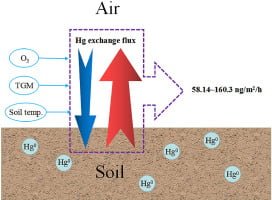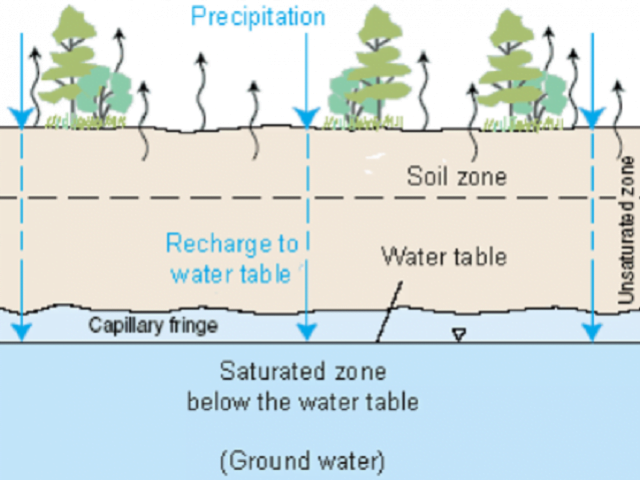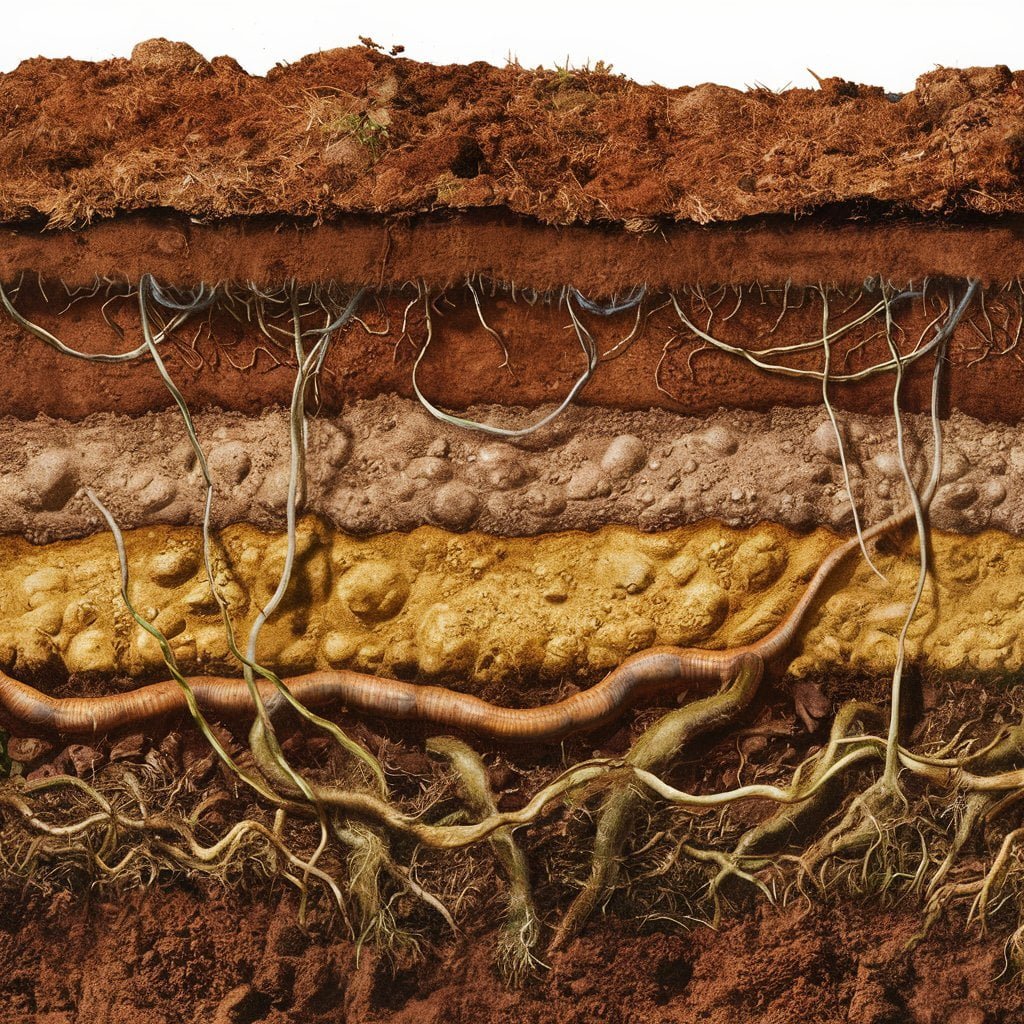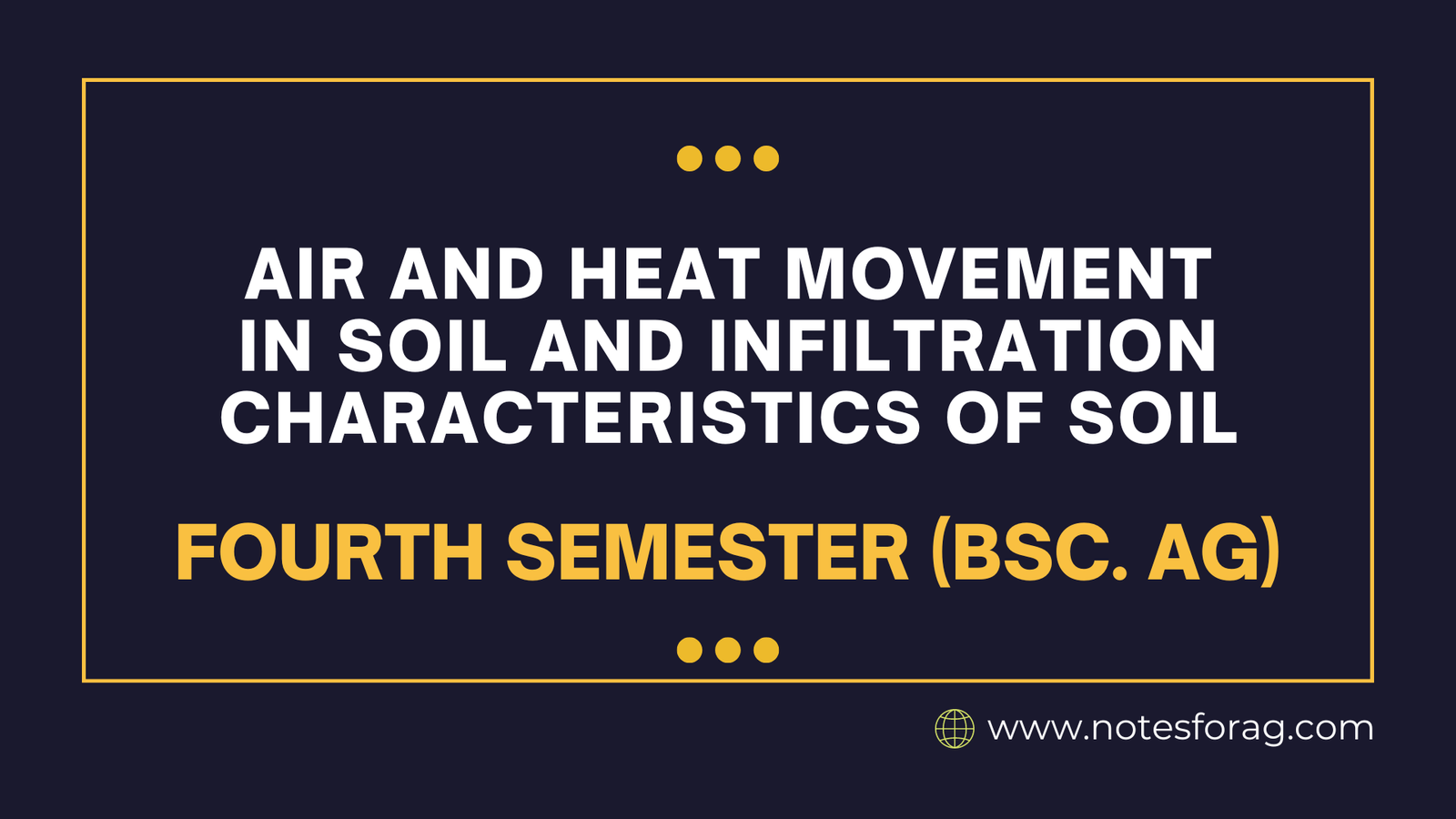Infiltration is the downward entry of water into the soil. The velocity at which water enters the soil is infiltration rate. Infiltration rate is typically expressed in inches per hour. Water from rainfall or irrigation must first enter the soil for it to be of value.
Table of Contents
A bustling underground world awaits us. Air, heat, and water flow through the intricate network of pores in the soil, forming a dynamic symphony that supports plant life and influences a variety of environmental processes. Understanding these dynamics is critical for ensuring sustainable agriculture, hydrology, and healthy ecosystems.

The Airy Underground
Air takes up a considerable fraction of the pore space in soil, particularly under dry conditions. This air is essential for plant root respiration, allowing plants to absorb oxygen and emit carbon dioxide. The movement of air through the soil is principally influenced by diffusion, which is the tendency of gases to travel from places of high concentration to low concentration. As oxygen levels drop near plant roots owing to respiration, new oxygen from the atmosphere diffuses down to replenish them. Similarly, roots produce carbon dioxide, which diffuses upward.
However, soil moisture content and pore size distribution have a substantial impact on air flow. Saturated soils have little air space, which limits root respiration and may impair plant health. In contrast, well-structured soils with a good pore size balance promote optimal air and water exchange.
Heat Flow: Warming the Earth from Below
Heat transfer in soil is crucial for plant growth and various ecological processes. The sun’s energy warms the soil surface, and this heat then moves through the soil by three main mechanisms:
- Conduction: When soil particles come into contact with one another, heat is transferred directly between them. In comparison to moist soils that have better particle interaction, dry soils with bigger air voids are inferior conductors.
- Convection: Heat can also be carried by water movement in saturated soils. Heat transmission within the soil profile can occur as a result of warm water rising and cooler water sinking.
- Radiation: Heat can also travel through the soil as electromagnetic waves. However, this is a less significant mode of heat transfer compared to conduction and convection.
Predicting the growth and development of plants requires an understanding of heat transport in the soil. For example, warmer soil temperatures frequently promote root growth. Several chemical and biological processes that take place in the soil are also influenced by heat movement.
Infiltration: The Gateway for Water Flow
Infiltration refers to the process by which water enters the soil from the surface. It’s the first step for water to become available for plants and contribute to groundwater recharge. The rate and capacity of infiltration depend on several factors:
- Soil Texture: Sandy soils with large pores typically have higher infiltration rates compared to clay soils with smaller pores.
- Soil Structure: Well-aggregated soils with a good network of pores allow for faster infiltration than compacted or poorly structured soils.
- Organic Matter Content: Organic matter can improve soil aggregation and pore space, enhancing infiltration.
- Vegetation Cover: Vegetation slows down surface water flow, allowing more time for infiltration.
- Initial Soil Moisture Content: Drier soils have a higher capacity to accept incoming water compared to already saturated soils.

The Infiltration Symphony’s Finale
Once infiltrated, water can move through the soil in two ways:
- Saturated Flow: When all the pores are filled with water, gravity becomes the dominant force. Water moves rapidly through larger pores under the influence of hydraulic conductivity.
- Unsaturated Flow: Air begins to occupy some pores as water drains as a result of plant absorption or gravity. Here, the water movement slows down greatly compared to saturated flow, with adhesion between water molecules and soil particles playing a more major role.
The Importance of the Symphony
Understanding air, heat, and water flow through soil is crucial for various disciplines:
- Agriculture: Crop growth and water consumption efficiency can be enhanced by using appropriate management techniques to maximise the availability of air and water in the root zone.
- Hydrology: Comprehending infiltration properties influences flood control and water resource management by assisting in the prediction of runoff and groundwater recharge.
- Environmental Studies: These processes play a vital role in nutrient cycling, soil health, and overall ecosystem function.

By appreciating the intricate dance of air, heat, and water in soil, we can make informed decisions for sustainable land management, ensuring healthy soil ecosystems for generations to come.
Frequently Asked Questions (FAQs)
What is the movement of heat in the soil?
Heat can move through soils by conduction, convection, and latent heat transfer, among other methods. Heat conductivity, volumic heat capacity, and thermal soil qualities all influence heat conduction.
What is the characteristic of soil air?
The composition of soil air is also significantly different than atmospheric air, with the soil air having a greater concentration of CO2 due to plant and microbial respiration.
What are the 3 movements of heat?
Heat is transferred by three different methods: conduction, convection, and radiation.
Related Articles

